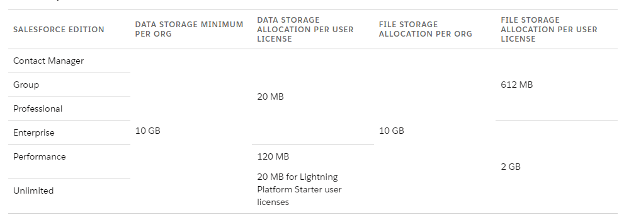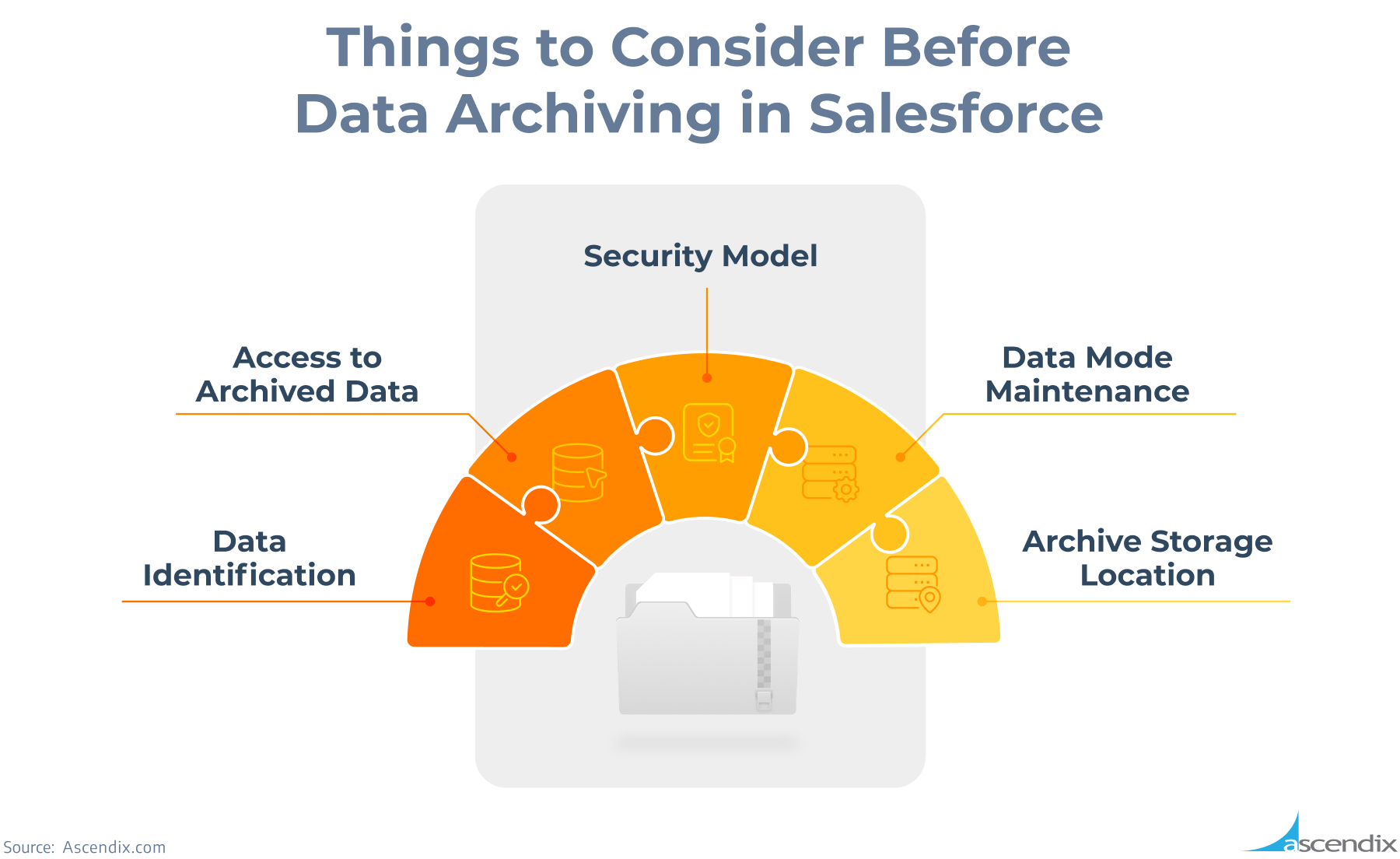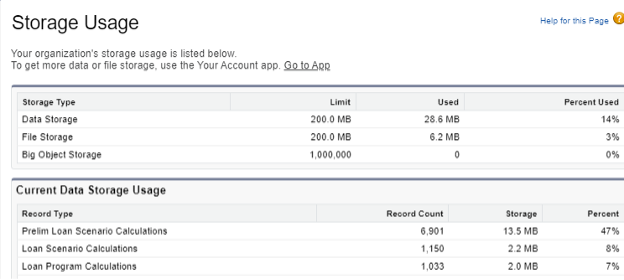Need Help with Data Archival or Backup in Salesforce?
We provide comprehensive consulting services to address your data management challenges. From auditing data sources to expert guidance on archival and backup strategies, we’ve got you covered.
Salesforce and data are intrinsically linked. Every business owner understands that losing vital information is an unacceptable and costly risk. According to an IBM report, a data breach can cost organizations an average of $4.35 million.
How can you save data and money? Through Salesforce data archival. In this article, you will discover:
By following these best practices and conducting a preliminary Salesforce data audit and assessment, you can optimize your data processes, enhance management, reduce storage costs, and improve user experience.
Let’s start from the basics.
Salesforce Data Archiving is the practice of moving historical or less frequently accessed data from the primary Salesforce storage to a different storage system.
Simply put, data archiving is the process of moving data from a limited and performance-constrained storage where it is easily accessible to much larger storage where it will be more difficult to access.
If you are still dealing with data overload, compliance risks, and operational inefficiencies, below you’ll find valid reasons for archiving your Salesforce data.
For most Salesforce editions, the limit is 10GB of data storage and 10GB of file storage.

Salesforce Storage Limits | Ascendix
Salesforce storage limits are strict and additional storage space costs money.
The limits can be increased by buying additional user licenses or upgrading the organization to a more expensive edition.
Various regulations dictate data retention periods.
Data must be stored for much longer than required by the business.
So, the data that is not needed by users cannot be deleted and must be archived instead.
The Salesforce platform supports scaling at multiple levels, including data scaling. However, there are aspects of the platform whose performance may be affected by excess data.
Among them are records search, report execution, and execution of scheduled processes. The impact on performance can be reduced by more precise tuning of the system, report, and list view filters.
However, this will require additional administrator management, as well as the use of support for these solutions at different levels.
Want to know more about Salesforce data archiving solutions? The Ascendix team can help you find your match.
Before choosing a Salesforce data archiving solution, you need to take into account certain things among which are:

Things to Consider Before Archiving Data in Salesforce | Ascendix
Determining which data to archive can be complex and requires a thorough understanding of business processes and data usage patterns.
The criteria for archiving may vary based on business needs, such as the record creation date, last activity date, or the fiscal year in which the record was closed.
The frequency of data access should align with the purpose of archiving. If archiving is mandated by laws and industry policies, regular users typically don’t need frequent access to this data.
In contrast, if regular access is required, additional effort is needed to develop a user interface, as most data archiving solutions do not offer a native user interface.
The security model for archived data needs to be configured separately from the active data and may differ.
Also, you need to determine who should have access to the archived data and who has the authority to unarchive it.
Data connected through links and lookups must preserve these connections to maintain integrity and enable unarchiving.
Without this, the data may be incomplete or inaccurate. Additionally, when archiving a parent record, all child records must also be archived.
If the parent record is deleted from the main storage, all associated child records will be removed due to cascade deletion.
Data storage locations can be categorized as internal or external, each with its pros and cons.
However, it is crucial to note that Salesforce does not protect data once it leaves the system.
If you opt for external data archiving, the external system is responsible for data security. Ensure a secure data transport mechanism to the external system and consider encrypting sensitive data.
We provide comprehensive consulting services to address your data management challenges. From auditing data sources to expert guidance on archival and backup strategies, we’ve got you covered.
There are many data archiving solutions; the choice of a specific solution depends on the data that needs to be archived, the security model, the volume of data, and the need for further access to it.
| | |||
| | Limited by External Storage. Daily API Limits. | Depends on the purchased plan | |
| - Low object schema complexity - Small number of objects for archiving | Easily accessible archived data | - Complex relationships between archived objects, - Large number of objects |
Big Objects is a Salesforce platform feature that provides separate storage space, not counting toward the overall data limit.
They ensure consistent performance for a billion records or more. By default, your Salesforce organization can store up to a billion Big Object records, a limit that can be increased by requesting Salesforce support.
Big Objects support queries using standard SOQL with the Bulk API and batch Apex, making custom solutions for accessing this data similar to developing components for regular Salesforce objects.
| Horizontally scalable distributed database | Relational database |
| Non-transactional database | Transactional database |
| Hundreds of millions or even billions of records | Millions of records |
Big Objects feature high data security and do not require integration with external platforms or associated fees.
While the initial development and UI creation may require additional investment, this solution is ideal for small and medium-sized organizations with a limited number of objects needing archiving.
If you choose to opt for this option, it’s recommended to identify which objects consume the most space early on and focus on archiving those specifically.
External Objects in Salesforce are similar to custom objects, but they store links to external data sources instead of storing the data themselves. They support nearly all the features of custom objects, including standard search and customizable layouts.
A common solution involves sending archived data to external storage and then linking Salesforce External Objects to this data. Salesforce provides various integration mechanisms with external systems, which can also be used for data storage.
The External Data Storage solution offers easy access to archived data, appearing seamless to users as if the data were stored within Salesforce.
This option involves developing an archiving mechanism and configuring integration initially.
It benefits from a ready-made UI and Salesforce security model. However, storing data externally introduces high-security risks and additional costs, necessitating a careful selection of external data storage.
The Heroku Platform is part of the Salesforce Platform, a multi-cloud app platform. Being supported by Salesforce it provides native integration options.
Heroku archival solution is a variation of the External Data Storage solution but is more reliable and supports many archiving features right out of the box.
Heroku Connect is an add-on that synchronizes data between your Salesforce organization and a Heroku Postgres database. In addition, there are also other data archiving apps on the market powered by Heroku.
Heroku Platform storage offers a reliable archival solution with seamless integration through the native Heroku Connect add-on.
It requires relatively low effort to set up mapping and records storage.
This solution is ideal for those who do not need regular access to archived data or are willing to invest in additional extensions to enable such access.
We will teach you how to use Salesforce solution to the fullest without overpaying for unnecessary functionality.
An archive contains historical data, should not change, and does not require frequent access. Its main purpose is to select data for archiving, free up space in the main storage, keep the database clean and up-to-date, and improve performance.
The main purpose of creating a backup is to secure data and ensure recovery in case of data loss or corruption in the main storage.
Unlike archiving, backup does not reduce storage costs or improve performance. A backup is an up-to-date copy of data; the data is copied, not moved.
To effectively manage data archiving in Salesforce, follow these steps:

Storage Usage Limits in Salesforce | Ascendix
 OwnBackup
OwnBackupPrice: Minimum contract size $500 per month
OwnBackup provides a comprehensive Salesforce backup and recovery solution designed to minimize data loss risks and costs, support regulatory compliance, and enhance business resilience.
Known for its user-friendly interface, OwnBackup ensures reliable data backup and restoration, making it a preferred choice for managing Salesforce data securely.
 GRAX for Salesforce
GRAX for SalesforcePrice: Free (but must pay to increase usage, users, or features.)
GRAX provides a robust Salesforce backup and archiving solution, enabling users to store data in the cloud or on-premises. It ensures compliance by maintaining a digital Chain of Custody.
This solution facilitates easy access, search, and comparison of historical data versions and supports integration with various Business Intelligence (BI) tools for advanced analytics.
 Veeam
VeeamPrice: For less than 300 users – $3 USD/user/month
Veeam offers a comprehensive Salesforce backup and recovery tool that ensures data security, compliance, and business resiliency.
It supports on-premises and cloud deployment, providing fast, flexible recovery from issues caused by third-party integrations, data loader mistakes, or human error.
Veeam’s platform delivers a single solution for cloud, virtual, physical, SaaS, and Kubernetes environments, ensuring data is always protected and accessible.
More storage space, better system performance, and compliance with data retention regulations— it’s all about Salesforce data archival.
Our Salesforce experts will guide you in selecting the best strategy tailored to your business needs. These specialists offer deep expertise in regulatory compliance and system performance as well as cost-effective archiving solutions.
Working with information is a well-encompassing process. From keeping track of historical data and market trends to managing sales pipelines and closing deals the Ascendix team can help you tackle any challenges.
As a Salesforce Crest Consulting Partner, our team has earned over 120 Salesforce certifications, demonstrating our deep and comprehensive expertise in the Salesforce ecosystem.
Book a free consulting call with us. Let’s work together to find the best data backup and archival solution in Salesforce.
Salesforce provides several native options for backing up customer data:
Backing up Salesforce data is crucial to prevent data loss, ensure regulatory compliance, and support disaster recovery.
Regular backups enable quick restoration after accidental deletions, corruption, or cyberattacks. They provide a historical record for audits, maintain data integrity, and facilitate system migrations.
Additionally, backups offer valuable business insights by preserving historical data for trend analysis and performance measurement.
Salesforce performs a full data backup once every week and retains it for 90 days. Additionally, metadata is backed up daily.
However, users should consider implementing their own backup solutions for more frequent backups, granular control, and quicker data restoration to ensure comprehensive data protection and minimize potential data loss.
To archive data in Salesforce you can:
Ruslan is a Salesforce software developer at Ascendix Technologies, holding a master's degree in System Programming. With over 3 years of experience specializing in developing custom solutions to enhance operations in Salesforce, he is dedicated to performance and memory optimization to ensure the best user experience.